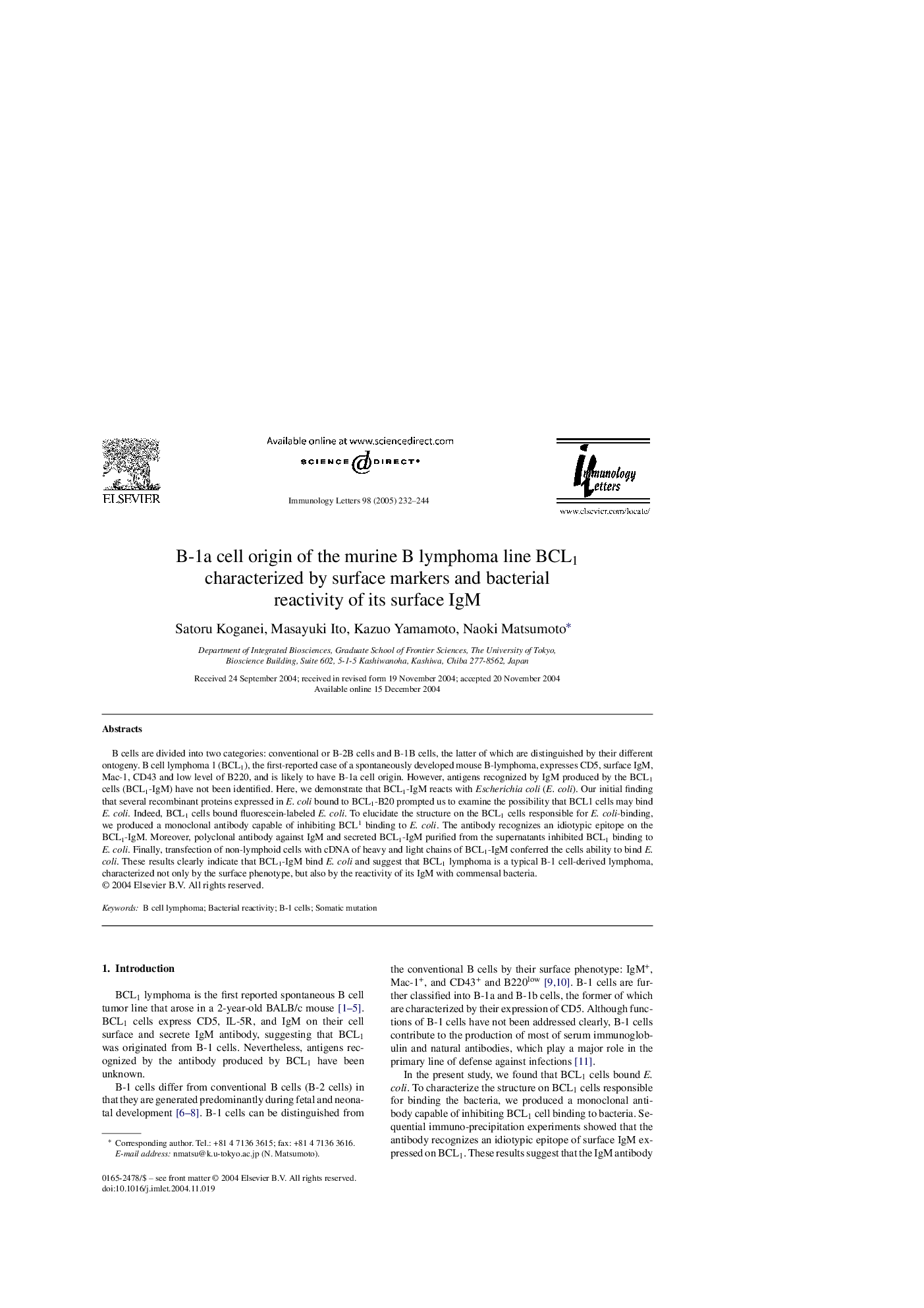| Article ID | Journal | Published Year | Pages | File Type |
|---|---|---|---|---|
| 9266232 | Immunology Letters | 2005 | 13 Pages |
Abstract
B cells are divided into two categories: conventional or B-2B cells and B-1B cells, the latter of which are distinguished by their different ontogeny. B cell lymphoma 1 (BCL1), the first-reported case of a spontaneously developed mouse B-lymphoma, expresses CD5, surface IgM, Mac-1, CD43 and low level of B220, and is likely to have B-1a cell origin. However, antigens recognized by IgM produced by the BCL1 cells (BCL1-IgM) have not been identified. Here, we demonstrate that BCL1-IgM reacts with Escherichia coli (E. coli). Our initial finding that several recombinant proteins expressed in E. coli bound to BCL1-B20 prompted us to examine the possibility that BCL1 cells may bind E. coli. Indeed, BCL1 cells bound fluorescein-labeled E. coli. To elucidate the structure on the BCL1 cells responsible for E. coli-binding, we produced a monoclonal antibody capable of inhibiting BCL1 binding to E. coli. The antibody recognizes an idiotypic epitope on the BCL1-IgM. Moreover, polyclonal antibody against IgM and secreted BCL1-IgM purified from the supernatants inhibited BCL1 binding to E. coli. Finally, transfection of non-lymphoid cells with cDNA of heavy and light chains of BCL1-IgM conferred the cells ability to bind E. coli. These results clearly indicate that BCL1-IgM bind E. coli and suggest that BCL1 lymphoma is a typical B-1 cell-derived lymphoma, characterized not only by the surface phenotype, but also by the reactivity of its IgM with commensal bacteria.
Related Topics
Life Sciences
Immunology and Microbiology
Immunology
Authors
Satoru Koganei, Masayuki Ito, Kazuo Yamamoto, Naoki Matsumoto,
